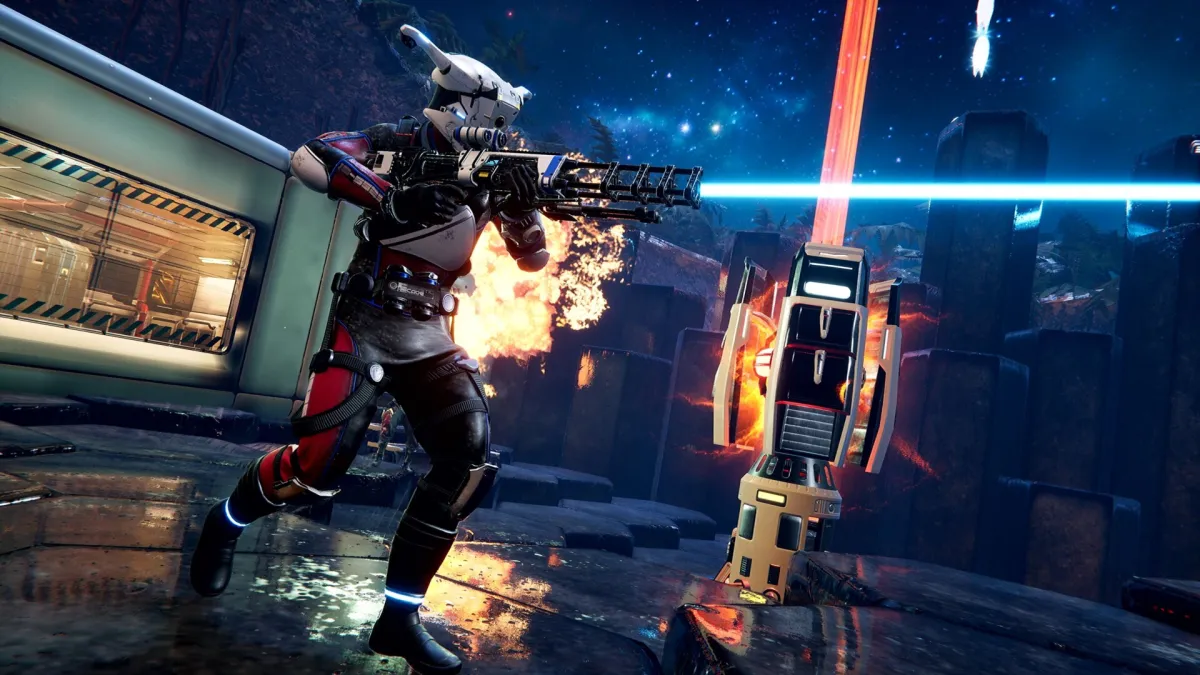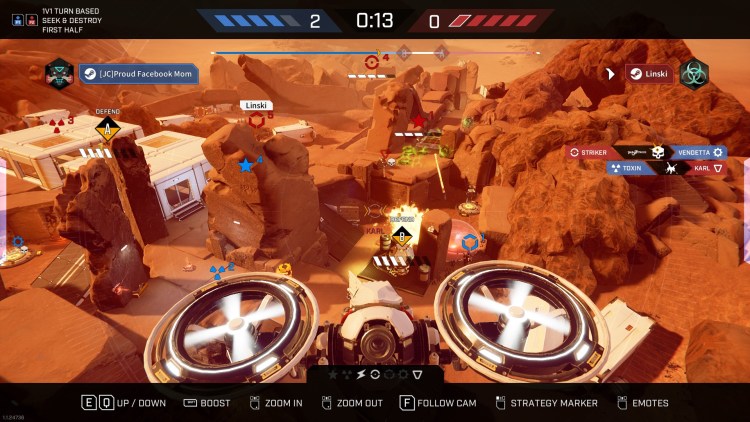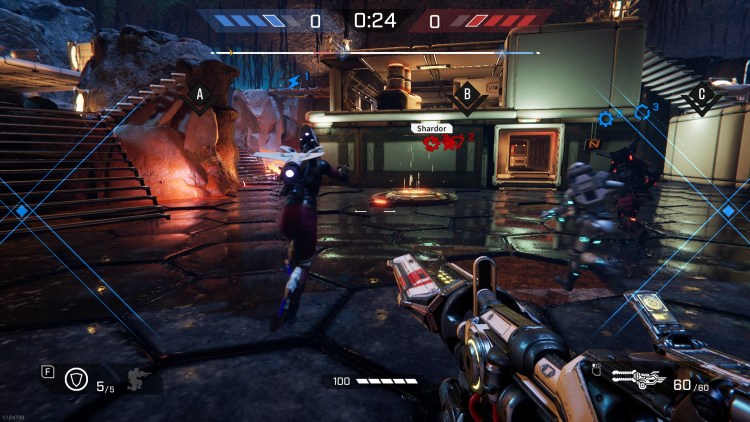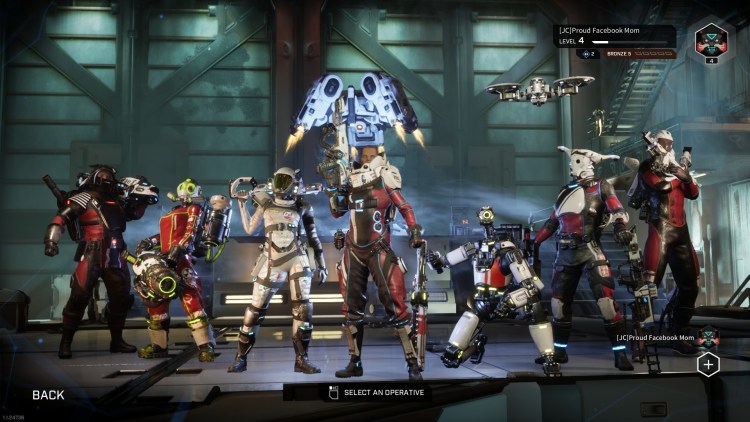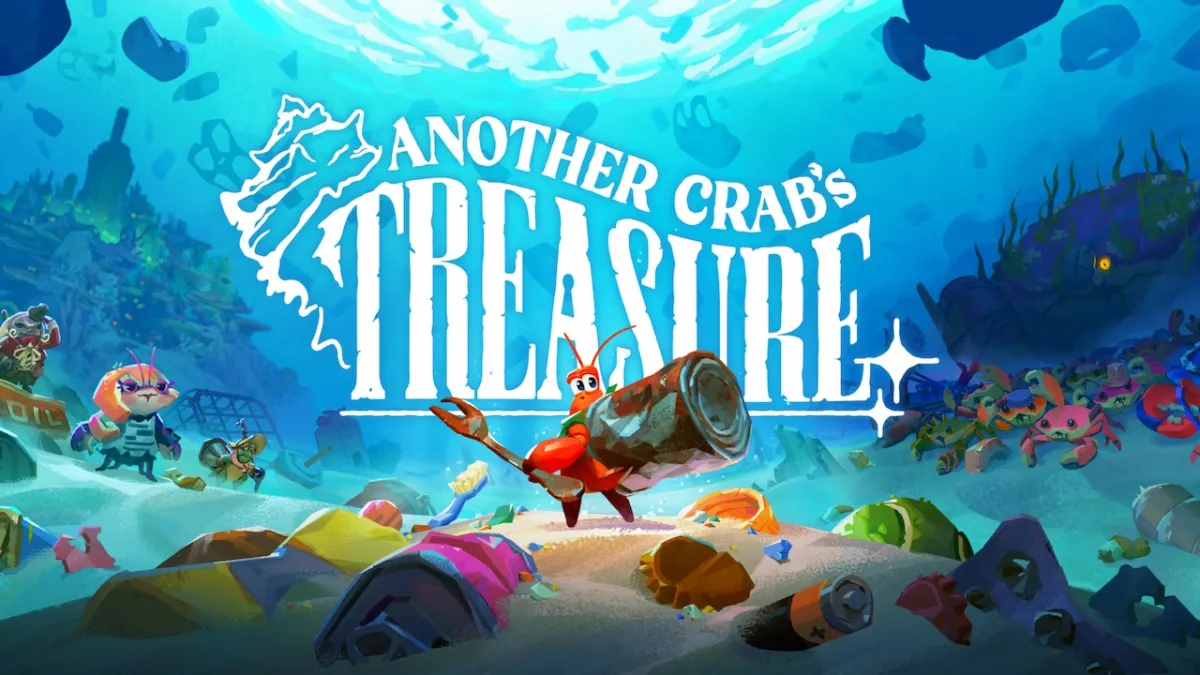Lemnis Gate from Canadian developer Ratloop Games reimagines the move-counter-move approach to turn-based combat as a free-flowing first-person shooter with time loop mechanics, set in colorful arenas across the galaxy. It’s a tough game, but that only makes it all the more rewarding when you’re able to eke out a victory.
If you’ve ever played a simple party game like Connect Four or Monopoly then you’re probably familiar with the turn-based genre. One of two (or more) players makes a move, and another player moves to counter that move or advance toward their own goal. The most popular version of this formula is chess, where equally balanced black and white pieces face off in a square arena on an eight-by-eight grid. Each piece has a specific purpose, with the end goal of each player being to eliminate the opposing player’s pieces and force a “checkmate,” claiming their king.
Popular games like Advance Wars and Into The Breach stick to the traditional isometric grid system, while titles such as Valkyria Chronicles and X-COM give the player more freedom to path-find. Lemnis Gate pushes this idea even further by introducing a recursive time limit and AI players to the mix.
Fight, die, repeat
It works like this: you start with a pool of 10 heroes (or “operatives”). When you join a match — either one versus one or two versus two — you select one of seven heroes, at which point the game switches to a first-person perspective, and you have 25 seconds to do as much damage as possible. When your move is over, those 25 seconds of action are set to repeat endlessly on the battlefield. The clock resets. Now, it is your opponent’s turn to select a hero and attempt to thwart the timeline you just created, or pursue their own objectives. After 25 seconds the clock resets, and the first player draws another hero. This back-and-forth interaction continues until both sides have no heroes remaining, and the final score is tallied.
Throughout the match, your hero’s timeline can be interrupted by premature death at the hands of your opponent. You can then attempt to protect your previous hero and subdue their attacker within your next move, or move on to another target. This means that whenever you are killed while constructing a timeline, you are allowed to keep playing as a “ghost” for your remaining seconds, your actions recorded to be put into action if you somehow manage to save yourself from being killed in a later move.
The arena becomes increasingly crowded with more and more heroes acting out (and interfering with) each other’s timelines, the final result being 25 seconds of pure carnage, as your “pieces” duke it out in a frantic overlapping battle. If this all sounds complicated, that’s because it is, at first. The fastest way to learn is to jump into a match and experiment.
Cause and chaos
There are four main game types: Retrieve, Search & Destroy, Capture and straight-up Deathmatch, each requiring a unique approach to achieve victory. Your heroes come in the familiar tropes of competitive first-person shooters harkening back to the days of Team Fortress: the speedy scout, the heavy weapons guy, the sniper, the engineer, the demolitionist, and so on, with some “specialist” units, like Karl the robot, who dons a laser and throwable shield. Each character has a primary weapon and a special ability, such as the construction of a sentry gun, frag grenades, or even bullet time.
The most intriguing and dangerous hero, in my eyes, is the Toxic Trooper, who can spray pools of acids that harm enemy players, but also his own. Heroes can be upgraded between games using experience gained from matches through a curious non-linear skill tree, where each unlock reveals a new outfit and the choice of multiple upgrades. These “upgrades” buff certain stats while diminishing others, allowing you to customize your preferred playstyle.
In Lemnis Gate, much frustration comes from a wasted move, either due to poor pathfinding, lack of time, or getting killed before you have a chance to do any good. I am ashamed to say that I have been “that guy” who quit a match early because I saw no prospect for victory. That is, until I discovered that one hero and one move can make all the difference, even up to the buzzer, through bravery or sheer luck.
While Lemnis Gate is absolutely a game of skill in how to best utilize the tools at your disposal when interacting with the environment and the enemy, there is a degree of chance to every encounter that keeps things fresh and utterly unpredictable. You might be killed by friendly fire, or accidentally kill one of your own, and even the most storied and accomplished player can be dethroned out of left field by a stray rocket disrupting his timeline and burying him under the domino effect of cause and effect that follows.
Meet me on the battlefield
The current player base is consistent enough that finding a match isn’t difficult, especially considering only two players are needed to play. The short time limit, smallish arenas, and semi-permadeath gameplay require you to not just be a good shot, but quick on your feet and able to manage your actions wisely. This creates a more stressful and punishing atmosphere than other popular shooters like CS:GO, where redemption is just a respawn away. Fortunately, the controls are simple and perfectly responsive, as is the framerate, and the guns feel weighty and responsive. The voice acting is quirky and spot-on, giving each hero a memorable personality on par with games like Overwatch. The graphics are crisp and the color palette is suitably sci-fi without feeling overly serious.
Even if you’re not a fan of competitive shooters, or actively avoid them (like me), Lemnis Gate is worth a gander due to its original mechanics and sleek presentation. It presents a tactical sandbox with fluid shooter action in short, fast-paced matches, where the rush of victory is second to none.

